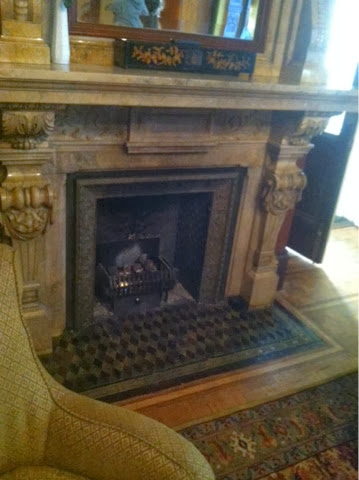Wednesday, February 26, 2014
Monday, February 17, 2014
Drawing and Drafting
Drawing and layout using string/ squares/ scribe:
Splitting the line: to find the center point of a
line you use your compass. You put one end on the end of the line and the other
end past the midpoint and make an arch. Then you do the same ting only on the
other side of the line. Draw a line connecting to two intersecting points.
Where that line intersects your original line is the midpoint.
slate laying and block laying
Description of laying brown stone block and slate
Slate Laying: when laying slate you must first lay
out all of the slates before you put any of them in permanently. This is
essential because most slates will need to be cut and fitted. When laying out
and cutting the slate it is important to take into account to joints.
Block Laying:
When laying block it is important that it is straight.
To assure that it is we use a string line. The way this works is you put one
end of the string on each end of that wall this way when you are laying the
stone you have something to reference, line the block up with the string.
Cutting stone and scribing block
When cutting stone you must use eye and ear
protection, and wear a mask covering your mouth. There are different ways to
cut stone. You can use a power tool, when cutting slate you can use a slate
cutter, or you can use a hammer and pitch.
The cut of a stone dictates how you use it because
you want the flat edges to go against another stone, and you want the uneven
edges to face the outside. Most of the brownstones had only 1 uneven side, this
side is what you will see when the wall is complete.
Before cutting a stone you must first evaluate the
stone to make sure you are cutting off the side that is most useless. Then use
a scribe to mark exactly where you want to cut. A scribe is a pointed edge that
will scrape a visible line into a stone. Once the stone is marked and you have
your safety equipment on you are ready to cut.
Mixing Mortarts and Ratios:
Mixing Mortars and Ratios:
Recommended use of mortar types m/n/s/o/:
From ASTM C 270
Compressive strength: A compression failure in masonry made with weak mortars
occurs as a tension failure in the bricks, as they seek to prevent the mortar
from being pressed out of the joints. The expression is derived by assuming
hydrostatic pressure in the mortar joints, which is the most unfavorable
stress distribution with respect to tensile stresses in bricks. The
expression is compared with the results of compression tests of masonry made
with weak mortars.
Mixing mortars/ Addition of color:There
are three primary ways to make mortar:
1.
Portland
Cement, Hydrated Lime and Masonry Sand
2.
Masonry
Cement and Masonry Sand
3.
Pre-mixed
Mortar
In class we mixed lime with sand to create the mortar we
used for the joints on out brownstone wall. We used a ratio of 3:1
When adding the color it is important to keep track of
exactly how much you are adding so that when you make another batch of mortar
the color matches exactly. Add the color to the mortar after it is mixed.
 |
|
Subscribe to:
Comments (Atom)



















.JPG)


.JPG)